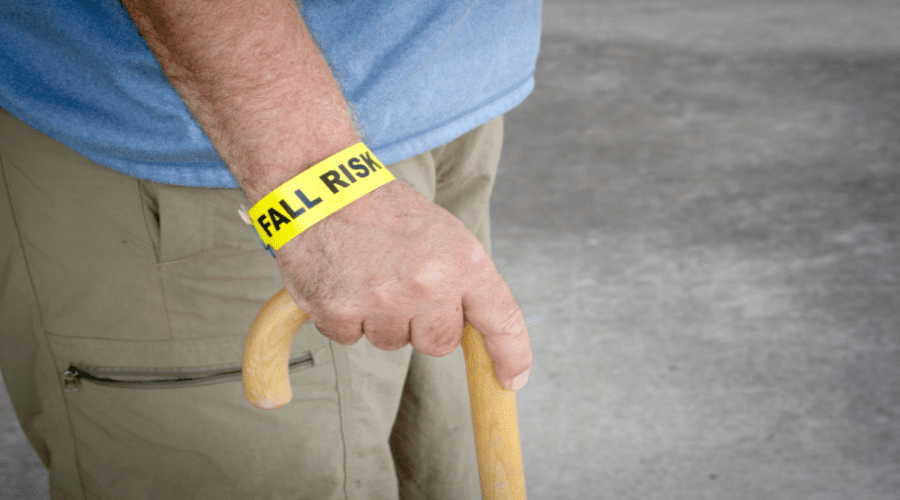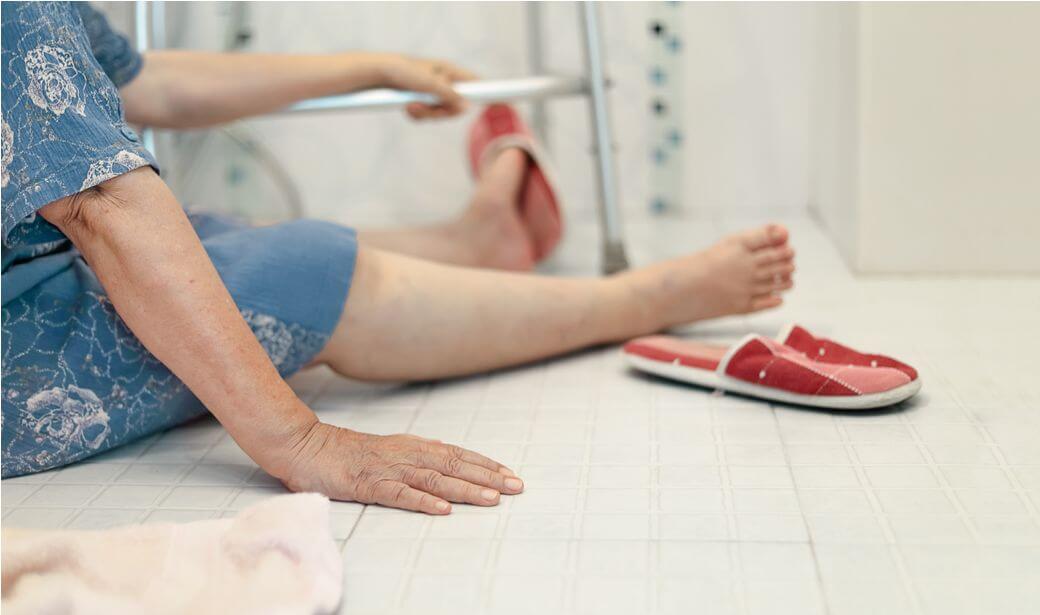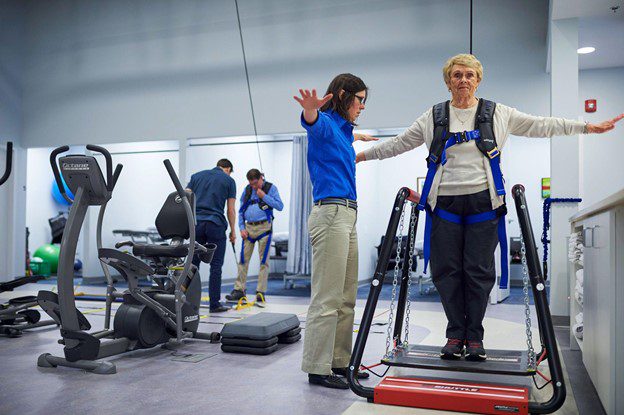Fall Prevention in Hospitals: Strategies to Prevent Patient Falls

Falls are a major health concern around the world. According to the World Health Organization, each year about 600,000 falls worldwide result in death. Falls continue to be the number one adverse event within a hospital, with 3-20% of inpatients falling at least once during their hospitalization. Of those, 30 to 51% of in-hospital falls result in injury.
Once a patient has experienced a fall, their quality of life can deteriorate due to an ongoing fear of falling again, which can impact their ability to rehab properly. This can lead to weight gain, depression, an increased risk of stroke, and more. Identifying your fall-risk patients is extremely important for implementing fall precautions and reducing the number of falls in a hospital setting.
Identifying High Fall Risk Patients

Many factors can increase the patient’s risk of falling while in the hospital. They include:
- Having a balance disorder
- Advanced age (over 65)
- General weakness
- Lack of lower body strength
- Illness
- Recovering from surgery
- Experiencing a previous fall
- Vision problems
- Vitamin D deficiency
- A messy environment
- And more
It is important to identify the risk factors that may contribute to a higher likelihood of falling. Be sure to check the patient’s environment and medical history to ensure their chances of falling are as low as possible.
Universal Fall Precautions in Hospitals

Universal fall precautions apply to all patients regardless of fall risk. They revolve around keeping the patient’s environment as safe and comfortable as possible. The basics of fall prevention strategies are:
- Orient patients to their room
- Ensure their call light is accessible and each patient knows how to use it
- Keep the patient’s important personal possessions handy so they can easily be reached
- Keep the brakes on wheelchairs and beds locked, unless the patient needs to be moved to another location while they’re in the wheelchair or bed
- Follow your facilities protocols for safe moving, transferring, and ambulating of patients
- Monitor patient rooms for clutter and remove or relocate clutter deemed unsafe
- Assess each patient’s slippers/shoes for proper fit and the appropriate non-skid features
Other Steps for Fall Prevention in Hospitals
There are plenty of other steps your staff can take to prevent in-hospital falls. This includes:
- Using handrails in bathrooms, patient rooms, and hallways
- Ensuring floors are not wet
- Keeping rooms and hallways well-lit
- Utilize colored armbands to identify fall-risk patients
- Use floor mats around the patient’s bed in case they fall
- Teaching patients how to avoid a fall and what to do if they do fall
- Utilizing technology to prevent falls
Ensure Thorough Reporting of All Falls and Near Miss Falls
Reporting all falls and near-miss falls is important for several reasons:
- Regular reporting helps hospitals improve their processes and safety measures
- Documenting falls and near-misses can highlight potential hazards
- Documenting falls and near-misses can highlight areas where staff training is needed
- It can provide patients and their families confidence knowing that safety is a top priority
- For legal and financial reasons
What Technology Helps Prevent Falls in Hospitals?

Many different pieces of technology can help prevent patient falls in hospitals. Some different technologies include:
Bed and Chair Exit Alarms
These sensors are placed on beds or chairs. They alert staff when the patient tries to get up without assistance.
Wearable Devices
Wearable technology, like smart watches or bracelets, can monitor movements and alert staff about potential falls.
Smart Beds
Smart beds can monitor a patient’s position, movement, and vitals to provide data that can predict and prevent falls.
Video Monitoring
Cameras with motion detection capabilities can be installed in rooms or hallways to provide an immediate response if a fall risk is detected.
Electronic Health Records (EHR) with Fall Risk Assessment Tools
EHR systems that provide fall risk assessment results can help staff identify and document patients who are at risk. This helps ensure appropriate precautions are taken.
Automated Lighting Systems
Automated lights are activated by motion. This will ensure that hallways and patient rooms are well-lit, and will reduce the risk of trips and falls during the nighttime.
Overhead Track & Harness Systems
Overhead track and harness systems, like Solo-Step, keep your patient safe during any therapy activities or exercises. The Solo-Step is a ceiling-mounted track system, connected by a harness and lanyard that prevents patient falls during rehab.
The prevention of falls within hospital settings is extremely important for ensuring patient safety and the delivery of high-quality care. Falls represent a significant proportion of adverse events within healthcare environments, necessitating the adoption of comprehensive strategies to mitigate this risk. The initial step in this process involves the identification of patients at high risk through a meticulous evaluation of their medical history, surroundings, and specific risk factors. The implementation of universal fall precautions, alongside additional targeted measures, is crucial for creating a safer environment for all patients.
Furthermore, the integration of technology can markedly augment efforts to prevent falls. The utilization of bed and chair exit alarms, wearable devices, smart beds, and video surveillance systems can significantly contribute to fall prevention initiatives. The incorporation of electronic health records equipped with fall risk assessment tools, automated lighting systems, and innovative solutions such as overhead track and harness systems further bolsters these efforts.
It is imperative that all falls, as well as near misses, are reported to facilitate ongoing improvement. This reporting process enables hospitals to refine their safety protocols, identify potential hazards, and provide targeted staff training. By prioritizing fall prevention, hospitals ensure their patients and families feel secure and confident in the care they receive.
To learn more strategies to prevent falls in your facility, check out our other blog posts!